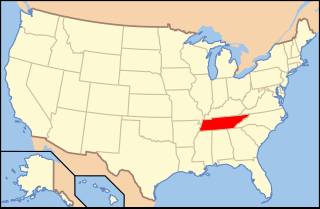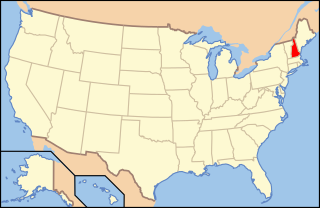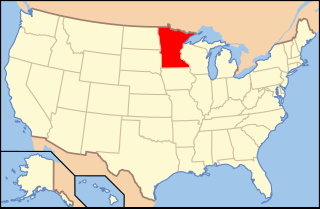Stenolaemata are a class of exclusively marine bryozoans. Stenolaemates originated and diversified in the Ordovician, and more than 600 species are still alive today. All extant (living) species are in the order Cyclostomatida, the third-largest order of living bryozoans.

The Falls of the Ohio National Wildlife Conservation Area is a national, bi-state area on the Ohio River near Louisville, Kentucky in the United States, administered by the U.S. Army Corps of Engineers. Federal status was awarded in 1981. The falls were designated a National Natural Landmark in 1966.
Hederellids are extinct colonial animals with calcitic tubular branching exoskeletons. They range from the Silurian to the Permian and were most common in the Devonian period. They are more properly known as "hederelloids" because they were originally defined as a suborder by Bassler (1939), who described about 130 species. Although they have traditionally been considered bryozoans, they are clearly not because of their branching patterns, lack of an astogenetic gradient, skeletal microstructure, and wide range in tube diameters. Work continues on assessing the true affinities of hederelloids, but they appear to be most closely related to phoronids and other lophophorates.

The Columbus Limestone is a mapped bedrock unit consisting primarily of fossiliferous limestone, and it occurs in Ohio, Pennsylvania, and Virginia in the United States, and in Ontario, Canada.
Lunostoma is an extinct genus of bryozoans which existed during the middle Devonian of what is now Germany, precisely from the Gerolstein syncline. It was described by Andrej Ernst, Paul D. Taylor, Jan Bohatý and Patrick N. Wyse Jackson in 2012, and the type species is L. pulchra.
Fossils of many types of water-dwelling animals from the Devonian period are found in deposits in the U.S. state of Michigan. Among the more commonly occurring specimens are bryozoans, corals, crinoids, and brachiopods. Also found, but not so commonly, are armored fish called placoderms, snails, sharks, stromatolites, trilobites and blastoids.

Paleontology in Tennessee refers to paleontological research occurring within or conducted by people from the U.S. state of Tennessee. During the early part of the Paleozoic era, Tennessee was covered by a warm, shallow sea. This sea was home to brachiopods, bryozoans, cephalopods, corals, and trilobites. Tennessee is one of the best sources of Early Devonian fossils in North America. During the mid-to-late Carboniferous, the state became a swampy environment, home to a rich variety of plants including ferns and scale trees. A gap in the local rock record spans from the Permian through the Jurassic. During the Cretaceous, the western part of the state was submerged by seawater. The local waters were home to more fossil gastropods than are known from anywhere else in the world. Mosasaurs and sea turtles also inhabited these waters. On land the state was home to dinosaurs. Western Tennessee was still under the sea during the early part of the Cenozoic. Terrestrial portions of the state were swampy. Climate cooled until the Ice Age, when the state was home to Camelops, horses, mammoths, mastodons, and giant ground sloths. The local Yuchi people told myths of giant lizard monsters that may have been inspired by fossils either local or encountered elsewhere. In 1920, after local fossils became a subject of formal scientific study, a significant discovery of a variety of Pleistocene creatures was made near Nashville. The Cretaceous bivalve Pterotrigonia thoracica is the Tennessee state fossil.

Paleontology in New Hampshire refers to paleontological research occurring within or conducted by people from the U.S. state of New Hampshire. Fossils are very rare in New Hampshire because so much of the state's geology is highly metamorphic. The state's complicated geologic history has made dating its rocks and the fossils they contain "a difficult task." The state's Devonian rocks are especially metamorphosed, yet its Mississippian rocks formed too recently to have been subject to the same metamorphism. Nevertheless, despite the geologic complications some fossils have been discovered in the state.

Paleontology in Minnesota refers to paleontological research occurring within or conducted by people from the U.S. state of Minnesota. The geologic record of Minnesota spans from Precambrian to recent with the exceptions of major gaps including the Silurian period, the interval from the Middle to Upper Devonian to the Cretaceous, and the Cenozoic. During the Precambrian, Minnesota was covered by an ocean where local bacteria ended up forming banded iron formations and stromatolites. During the early part of the Paleozoic era southern Minnesota was covered by a shallow tropical sea that would come to be home to creatures like brachiopods, bryozoans, massive cephalopods, corals, crinoids, graptolites, and trilobites. The sea withdrew from the state during the Silurian, but returned during the Devonian. However, the rest of the Paleozoic is missing from the local rock record. The Triassic is also missing from the local rock record and Jurassic deposits, while present, lack fossils. Another sea entered the state during the Cretaceous period, this one inhabited by creatures like ammonites and sawfish. Duckbilled dinosaurs roamed the land. The Paleogene and Neogene periods of the ensuing Cenozoic era are also missing from the local rock record, but during the Ice Age evidence points to glacial activity in the state. Woolly mammoths, mastodons, and musk oxen inhabited Minnesota at the time. Local Native Americans interpreted such remains as the bones of the water monster Unktehi. They also told myths about thunder birds that may have been based on Ice Age bird fossils. By the early 19th century, the state's fossil had already attracted the attention of formally trained scientists. Early research included the Cretaceous plant discoveries made by Leo Lesquereux.

Cystoporata, also known as Cystoporida or cystoporates, are an extinct order of Paleozoic bryozoans in the class Stenolaemata. Their fossils are found from Ordovician to Triassic strata.
Fenestrata is an extinct order of bryozoan, dating from the Upper Arenig. Most fenestrate bryozoans formed net-like colonies that water currents flowed through, with autozooecial apertures only on the side of the colony facing into the current.This colony structure was vulnerable to predators, so some fenestrate bryozoans produced skeletal superstructures, likely to strengthen or protect the colony, and others had protective spines surrounding their autozooecial apertures.

Paraspirifer is a genus of large brachiopods that lived during the late Lower and Middle Devonian in what now are Germany, Spain, Morocco and the United States.
Coenites is an extinct genus of prehistoric corals in the family Coenitidae. C dublinensis occurs in the Columbus Limestone, a mapped bedrock unit consisting primarily of fossiliferous limestone, and it occurs in Ohio, Pennsylvania, and Virginia in the United States, and in Ontario, Canada.
Paleontology or palaeontology is the study of prehistoric life forms on Earth through the examination of plant and animal fossils. This includes the study of body fossils, tracks (ichnites), burrows, cast-off parts, fossilised feces (coprolites), palynomorphs and chemical residues. Because humans have encountered fossils for millennia, paleontology has a long history both before and after becoming formalized as a science. This article records significant discoveries and events related to paleontology that occurred or were published in the year 2015.
Hemitrypa is an extinct genus of bryozoans that lived from the Devonian to the Permian period, belonging to the family Fenestellidae. Like some other fenestrate bryozoans, it produced a skeletal superstructure to protect the colony.
Fenestrapora is an extinct genus of bryozoans of the family Semicosciniidae that lived during the Devonian period. Its colonies have a net-like structure, shaped into a flaring funnel. It is distinct from most other fenestrate bryozoans due to its aviculomorphs, structures that are thought to have had the function of cleaning or defense.
Leptotrypa is an extinct genus of bryozoans of the family Atactotoechidae that formed unifoliate encrusting colonies, growing on surfaces like the shells of brachiopods.
Quadrisemicoscinium is an extinct genus of fenestrate bryozoan, known from the Early Devonian period, of the family Semicosciniidae. It formed net-like colonies of relatively thick branches with two rows of autozooids per branch, supported by a vesicular skeleton.
Fistuliphragma is an extinct genus of cystoporate bryozoan of the family Fistuliporidae that lived in the Devonian period. Its colonies could have branched or encrusting forms, with hollow tubular branches in the case of the branched form, and possessed a well-developed vesicular skeleton. Its autozooecia possessed prominent lunaria and hemiphragms. The genus is distinct from Cliotrypa and Strotopora because of the absence of gonozooecia.






